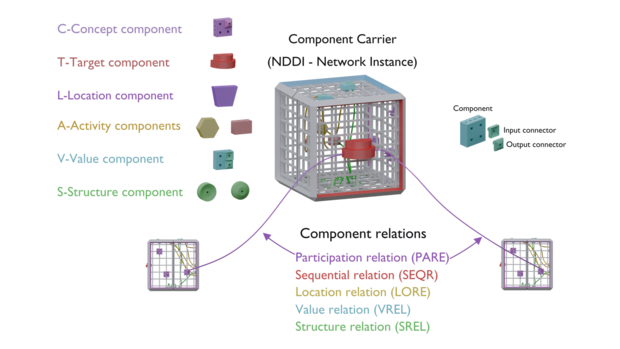GNOT: Difference between revisions
mNo edit summary |
No edit summary |
||
| Line 5: | Line 5: | ||
The Gativus Notation for the nodes is shown below. The node holder (container) would be shown as a cube, where every face is dedicated for one a few type of components. At this time, 7 types of components had been developed as well as 5 types of relations.[[File:G-NOT.png|center|620x620px|thumb|Gativus Notation (GNOT)]] | The Gativus Notation for the nodes is shown below. The node holder (container) would be shown as a cube, where every face is dedicated for one a few type of components. At this time, 7 types of components had been developed as well as 5 types of relations.[[File:G-NOT.png|center|620x620px|thumb|Gativus Notation (GNOT)]] | ||
== Next article == | |||
[[OMAP | Object Map (OMAP)]] | |||
Revision as of 22:41, 30 January 2025
In order to converge high-level "mind" components and low-level "body", Gativus developed unified node, which would be technically implemented as network digital instance on the electronic device like computer.
The high-level and low-level components has to be interconnected to achieve convergence levels, and consequently they have to be located in one node, which will have external connectivity by relation established between component's connectors (points of connections) and internal interconnection inside isolated node's space.
The Gativus Notation for the nodes is shown below. The node holder (container) would be shown as a cube, where every face is dedicated for one a few type of components. At this time, 7 types of components had been developed as well as 5 types of relations.
